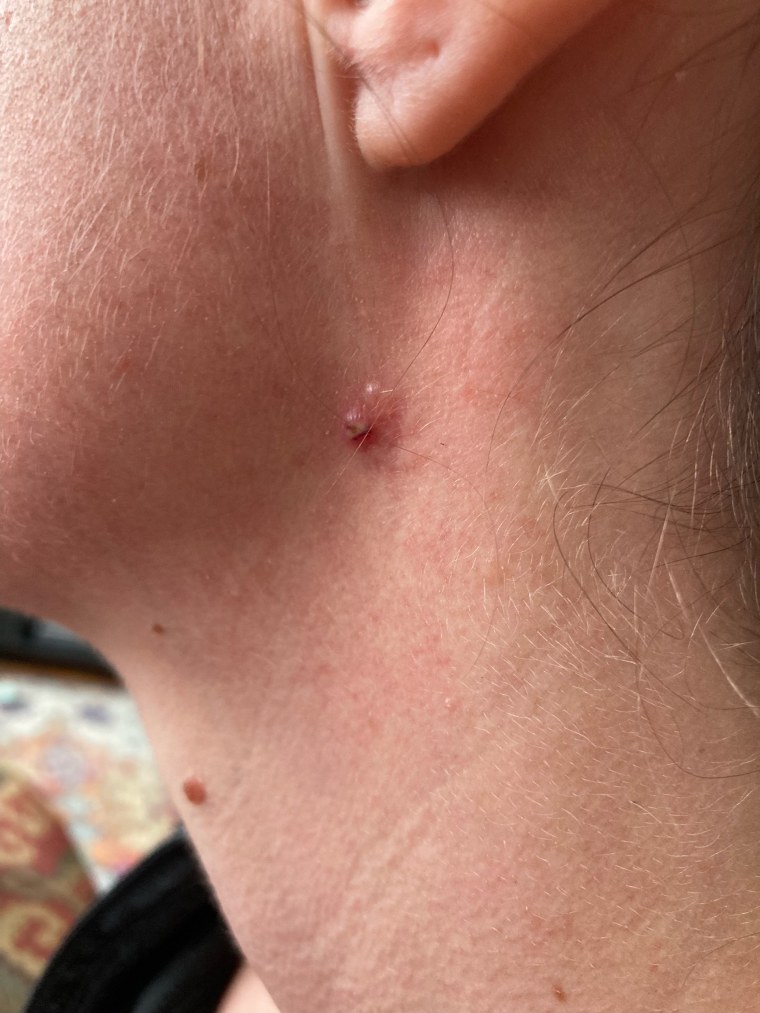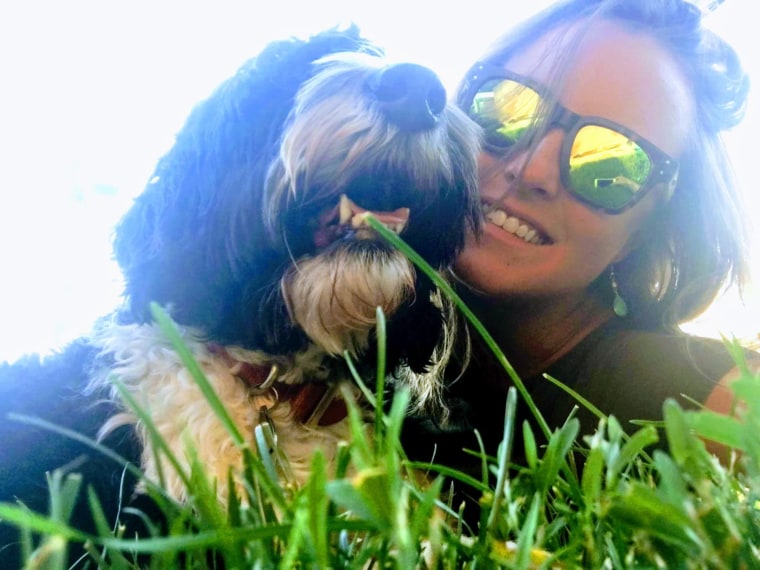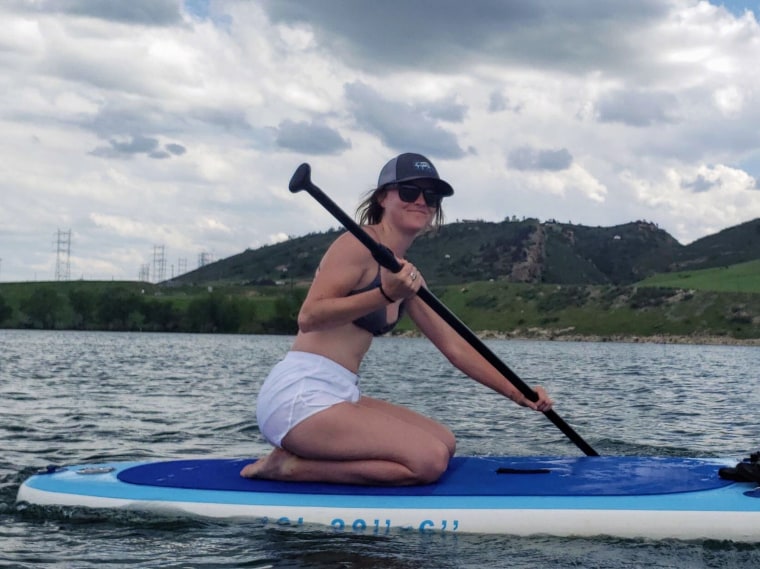When Megan Fry noticed that a mole on her neck suddenly looked blistered and turned black, she knew she needed to see a dermatologist quickly. But she had recently moved and hadn’t yet established care with a doctor.
“I felt a little overwhelmed,” Fry, 33, of Minneapolis, told TODAY. “I knew in my gut that there was a sense of urgency — that this needed some attention.”
A local practice though offered her the option to submit a picture through an app so they could determine if she needed an urgent appointment.
“Medicine has advanced so much as well as technology that anyone has the capacity or the opportunity to be seen by a physician sooner rather than later,” Fry said.
A family and personal history of skin cancer
When Fry was 10, her dad went for a skin biopsy and it revealed he had melanoma. Even though a doctor excised the cancer, he had to return for more removal because they were unable to get clean margins. Doctors learned his melanoma was “relatively invasive” and soon after he died.
“After seeing my dad go through his experience it just resonated with me the importance of staying on top of this and advocating for my own health,” Fry explained. “Hearing his story definitely added a wow factor to prioritizing my health.”
Fry has a lot of moles and freckles so she often visited a dermatologist for preventative care. Most of her early biopsies were benign, but when she was in her mid-twenties the results changed.

“My biopsy results unfortunately started coming back with more malignancy,” she said. “I’ve had two basal cell and one squamous cell excision within the last eight years.”While doctors have told her that it’s “unusual” she has had so many skin cancers at a young age, Fry suspects that it has something to do with family history. She recently learned that her paternal grandmother also had skin cancer.
“I have that genetic predisposition,” she said.
The American Academy of Dermatology Association recommends that people think of their ABCDEs when it comes to moles and freckles on their skin:
A: Asymmetrical, meaning the two sides of the mole don’t look alike
B: Borders that look irregular, lacy, ill defined
C: Color that looks different through the mole that could be brown, black, white, red or blue
D: Diameter means moles that are larger than a pencil eraser
E: Evolving moles that become larger, change shape or switch color
If people notice any of these changes, they should contact their dermatologist.
When Fry noticed the the mole on Friday, she agreed to share photos on app, Miiskin, used by Twin Cities Dermatology Center. While the app can be used so that patients can track how their skin looks over time, Dr. Margareth Pierre-Louis also uses it so patients can submit images and so the office can prioritize appointments.
“Megan was trying to establish care and basically she was being told it’s a three to four month wait,” Pierre-Louis told TODAY. “We did also tell her it was about a month wait. What we also told her told was that if you feel like your concern is urgent please download Miiskin … and the doctor will evaluate it and see if we can get you in sooner.”
After seeing the image and understanding Fry’s personal and family history of skin cancer, Pierre-Louis knew Fry needed to come in immediately.
“It was very clear to me it was basal cell,” she said. “The goal of telehealth is not to diagnose the patient and leave them on their own. It really is trying to see how we can get them … the care they need. And that’s where it was successful.”
By Monday, Fry visited the office and Pierre-Louis excised the spot because she felt it was basal cell cancer and wanted to treated Fry quickly.
“We just removed the skin from her neck area,” Pierre-Louis said.

A week after Fry first noticed the mole, pathology revealed it was basal cell cancer.
“Basal cell again is the most common cancer on Earth, the most common skin cancer, making up at least 55% of skin cancers,” Pierre-Louis said. "“She’s now cancer free.”
Protecting her skin as a ‘sun seeker’
Before moving to Minneapolis, Fry lived in Colorado and spent a great deal of time outdoors, gardening, kayaking and enjoying nature. She says she’s a “sun seeker.” While Fry still enjoys those activities, she’s mindful of covering her skin and staying out of the sun.
“I wear a giant sun hat,” she said. She also makes sure her arms, shoulders and back are covered. “It really hasn’t affected my daily activities. I am still very passionate for those but I’m just more self-aware about what areas of my body I’m covering.”
She hopes her story encourages others to take protective measures such as wearing sunscreen and covering up outdoors.
“(When I was younger) I wasn’t as diligent about wearing sunscreen. I want everyone to understand that there are safe, economical forms of sunscreen. Please wear it,” she said. “(I want) to motivate someone to go and get (a blemish) looked at by a professional.”
